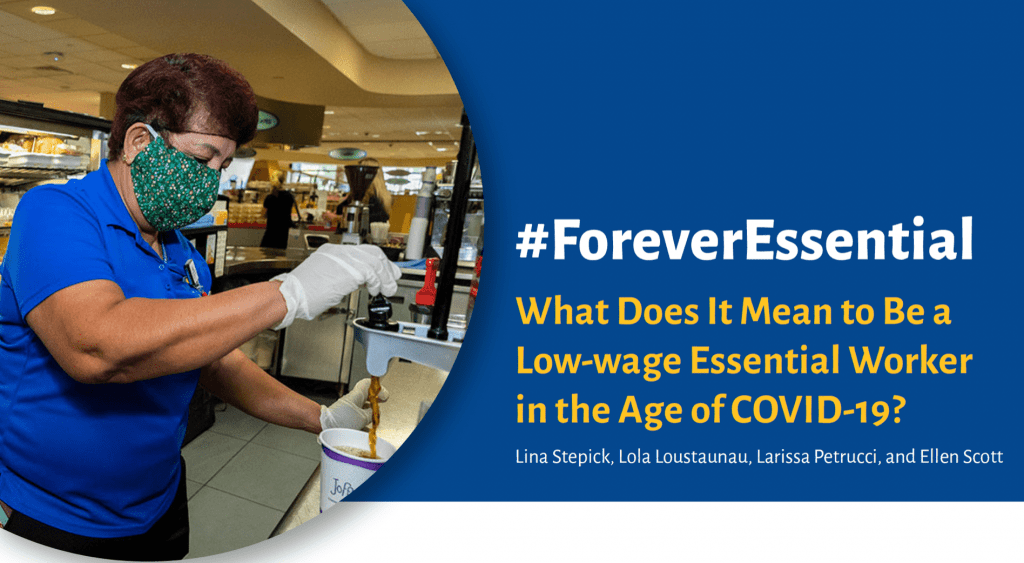LERC faculty conduct research on issues related to employment, labor relations, economic affairs, race and gender in the workplace, and workers’ legal rights. Our studies and reports have been used by academics, unions, government agencies, community organizations, and elected officials in developing policies and programs that address the needs of working Oregonians.
As the following studies and reports indicate, LERC faculty members possess wide-ranging scholarly and research expertise. We are committed to making this expertise readily available to the University community and the broader Oregon community, as an essential element of our public service.
Newly published:
November 2024: Oregon’s Farmworker Overtime Law and its Legislative Future by Mary Follo, MPP, MS. – A Graduate Researcher at the Labor Education and Research Center.
April 2024, Industry Analysis: Wage and Employment Trends for Oregon Iron Workers by Professor Gordon Lafer, LERC Co-Director and a Research Associate with the Economic Policy Institute in Washington, DC. and Kisa Clark, MA PhD Candidate and Graduate Researcher at the Labor Education & Research Center.
April 2024, policy brief by Gordon Lafer: School Board Communications With Educator Unions: What’s Legal and Illegal in Oregon?
BOOKS BY LERC FACULTY
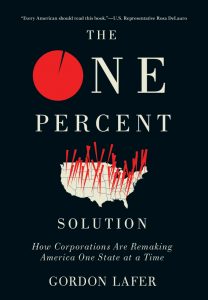 Gordon Lafer, The One Percent Solution: How Corporations Are Remaking America, One State at a Time
Gordon Lafer, The One Percent Solution: How Corporations Are Remaking America, One State at a Time
Cornell University Press, April 2017
In the aftermath of the 2010 Citizens United decision, it’s become commonplace to note the growing political dominance of a small segment of the economic elite. But what exactly are those members of the elite doing with their newfound influence? The One Percent Solution provides an answer to this question for the first time. Gordon Lafer’s book is a comprehensive account of legislation promoted by the nation’s biggest corporate lobbies across all fifty state legislatures and encompassing a wide range of labor and economic policies.
 Bob Bussel, Fighting for Total Person Unionism: Harold Gibbons, Ernest Calloway, and Working-Class Citizenship, University of Illinois Press, October 2015
Bob Bussel, Fighting for Total Person Unionism: Harold Gibbons, Ernest Calloway, and Working-Class Citizenship, University of Illinois Press, October 2015
During the 1950s and 1960s, labor leaders Harold Gibbons and Ernest Calloway championed a new kind of labor movement that regarded workers as “total persons” interested in both workplace affairs and the exercise of effective citizenship in their communities.
Working through Teamsters Local 688 and viewing the city of St. Louis as their laboratory, this remarkable interracial duo forged a dynamic political alliance that placed their “citizen members” on the front lines of epic battles for urban revitalization, improved public services, and the advancement of racial and economic justice. Their pioneering efforts raised fundamental questions about the fate of the post-industrial city, the meaning of citizenship, and the role of unions in shaping American democracy.
EDUCATION POLICY
 Spending Blind, by Gordon Lafer, was published in April, 2017 by The Public Interest. The study, the first of its kind in the country, examines how hundreds of millions of dollars are spent every year on renting, leasing or building buildings for California charter schools, but it all takes place without any effective policy guidance. Desperately needed education dollars are being wasted by paying to open schools that in many cases are both not needed for the population of students and do not provide an education that is better than what is already available in nearby public schools.
Spending Blind, by Gordon Lafer, was published in April, 2017 by The Public Interest. The study, the first of its kind in the country, examines how hundreds of millions of dollars are spent every year on renting, leasing or building buildings for California charter schools, but it all takes place without any effective policy guidance. Desperately needed education dollars are being wasted by paying to open schools that in many cases are both not needed for the population of students and do not provide an education that is better than what is already available in nearby public schools.
ALL COSTS CONSIDERED III — LERC Report on Contracting Out
Gordon Lafer and Bob Bussel, with assistance from graduate student Jaxon Love have completed a third study on the contracting out of school support services in Oregon, 2013
IMMIGRATION
 Bob Bussel, editor “A State of Immigrants:” A New Look at the Immigrant Experience in Oregon, 2021
Bob Bussel, editor “A State of Immigrants:” A New Look at the Immigrant Experience in Oregon, 2021
The politics of immigration in Oregon has continued to evolve in the direction of creating a more welcoming environment for immigrants and refugees. Written by scholars from Oregon’s three major research universities (University of Oregon, Oregon State University, and Portland State University, the report documents the many contributions (economic, social, civic, cultural, political) that immigrants and refugees are making in Oregon’s workplaces and communities, identifies the challenges immigrants and refugees face in adapting to their new environment, and highlights the efforts by immigrants and community-based institutions to help newcomers become acclimated and achieve a greater sense of acceptance and belonging. With increasing public awareness about the critical role immigrants have played as essential workers during COVID-19 and growing concern about systemic inequality, this research is especially relevant and timely. It offers analysis of a state grappling with the legacy of its often exclusionary past and its attempts to embrace the possibilities of an inclusionary future.
Espanol: Un Estado de Inmigrantes
Over the last two decades, the face of Oregon has changed dramatically with the arrival of significant numbers of immigrants and refugees. In spite of the profound demographic and social changes that Oregon is undergoing as its population has grown more diverse, there has been little systematic analysis of how immigrants are faring in their attempt to establish themselves in their new environment.
We offer this report as an initial effort to help broaden public understanding of the immigrant experience in Oregon and contribute to a more informed discussion of its complexities. It is time for policymakers, employers, educators, and civic leaders to recognize Oregon’s changing social demographics and develop a more systematic approach to helping immigrants adapt to their new environment.
INDUSTRY STUDIES and UPGRADING WORKER SKILLS

Union Apprenticeships Provide a Critical Pathway to More Diverse Construction IndustryOregon’s construction industry continues to be an important source of high-wage jobs across the state.
With billions of new state and federal infrastructure investment anticipated over the decade, it’s more important than ever to provide a pathway for women and workers of color into construction jobs.
In her report, Constructing a Diverse Workforce: Examining Union and Non-Union Construction Apprenticeship Programs and their Outcomes for Women and Workers of Color, LERC researcher Dr. Larissa Petrucci examines the progress women and workers of color have made entering the Oregon construction industry.
 Policy Options for Attaching Labor Standards to Employment in the Clean Energy Technology Sector LERC’s Department Manager, Deb Mailander, worked with University of Oregon Law School students in Fall 2019 to research opportunities where high quality jobs and labor standards could be incorporated into federally funded renewable energy technology projects. The resulting report was published by the Law School’s Environmental and Natural Resources Law Center. (Fall, 2019)
Policy Options for Attaching Labor Standards to Employment in the Clean Energy Technology Sector LERC’s Department Manager, Deb Mailander, worked with University of Oregon Law School students in Fall 2019 to research opportunities where high quality jobs and labor standards could be incorporated into federally funded renewable energy technology projects. The resulting report was published by the Law School’s Environmental and Natural Resources Law Center. (Fall, 2019)
JUST AND FAIR ECONOMY
A LABOR CRISIS WITHIN THE CHILD CARE CRISIS: The Growing Need for “Non-Traditional Hours” Met by Underpaid In-Home Providers
Larissa Petrucci
Lola Loustaunau
Mary C. King
Lisa Dodson
Ellen Scott
LERC is proud to release a new report, titled A LABOR CRISIS WITHIN THE CHILD CARE CRISIS: The Growing Need for “Non-Traditional Hours” Met by Underpaid In-Home Providers In this interview-based report, a multi-ethnic group of over thirty home-based child care providers, licensed to care for up to 16 children at a time, describe the long, irregular, badly paid and too often unpaid hours they work to care for the children of Oregon’s working class families. They and their families pay the price for both poor wages and working conditions in the rest of the economy, and for our stingy public child care programs. Families can’t afford the true cost of care and our severely underfunded public child care programs are too small and weak to make up the difference. Labor law has failed to restrain employers, who increasingly demand that parents work without a regular schedule, always “on call” to come in at short notice or to stay late. The promise of the federal Build Back Better bill to bring U.S. early childhood education and care up to the level of other wealthy countries has faded. Policy action at the federal, state and local level is urgently needed to make a significant public investment in early childhood education and care, raise labor standards in child care, reverse the steady loss of skilled, experienced and dedicated child care providers and workers and give our children the start in life that they deserve.
The report from University of Oregon’s Labor Education and Research Center shows the auto industry – long a backbone of the middle class – at a critical turning point.
 In Building Back Better or Building Back Worse: The challenge of building a high-road EV industry with antiunion employers, University of Oregon LERC professor Gordon Lafer finds that one of the most critical factors that will determine the quality of EV manufacturing jobs is whether employees will have the right to organize labor unions without fear or intimidation.
In Building Back Better or Building Back Worse: The challenge of building a high-road EV industry with antiunion employers, University of Oregon LERC professor Gordon Lafer finds that one of the most critical factors that will determine the quality of EV manufacturing jobs is whether employees will have the right to organize labor unions without fear or intimidation.
As Lafer shows, the recent track record of non-union auto employers has included contracting with “union avoidance” consultants who run scorched-earth campaigns that – relying on a combination of legal and illegal tactics – subject employees to a series of threats, intimidation, and personal reprisals designed to stop employees from exercising their right to collective bargaining. These campaigns violate the fundamental norms of American democracy, and subject American workers to the type of elections we normally expect only in rogue regimes abroad.

In February 2019, “The Union Advantage” was co-authored by LERC faculty members Mark Brenner and Lina Stepick.
The study provides the first empirical assessment of the impact of unions on living standards for Oregon workers. Their findings are consistent with previous national and state-level research, revealing that unions in Oregon raise wages, improve health and pension benefits, reduce overall income inequality, and significantly decrease racial and gender inequalities.
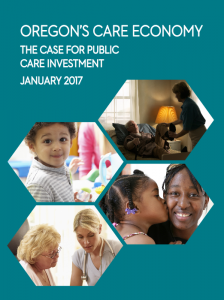
Raahi Reddy, Mary King and Laura Dresser
Oregon’s Care Economy: The Case for Public Care Investment (2017)
In this paper we make the case for a comprehensive public policy approach to addressing Oregon’s care gap by
enabling family members to care for loved ones without economic penalty and ensuring paid caregivers are able to
provide high quality care without compromising their own well-being, while all people receive care who need it. We describe Oregon’s care economy; outline the serious weaknesses of our current care infrastructure for children, seniors
and people living with disabilities; provide evidence of the high economic returns to public care investments; and point out that the most successful care investment programs simultaneously address the needs of over-burdened unpaid care
providers, the high cost and uneven quality of paid care, and significantly increase the care workers’ wages.
LABOR STANDARDS and WORKPLACE PROTECTIONS
Essential Work, Disposable Workers: Experiences of Immigrant and Refugee Food Processing Workers During the COVID-19 Pandemic in Rural Washington
A new research report by Lola Loustaunau, Sociology Doctoral Candidate, University of Oregon
 In the past several months, food processing workers have made the headlines of newspapers across the U.S. and the world. Usually invisibilized, these workers came under the spotlight due to their suddenly salient precariousness and importance. Food processing plants, where the majority of workers are immigrants and workers of color and where production entails long shifts in crowded closed environments, become sites of some of the largest COVID-19 outbreaks. The high incidence of cases of COVID-19 in the industry renewed conversations about the working conditions and the overall sustainability of the U.S. food supply chain. Download the report here.
In the past several months, food processing workers have made the headlines of newspapers across the U.S. and the world. Usually invisibilized, these workers came under the spotlight due to their suddenly salient precariousness and importance. Food processing plants, where the majority of workers are immigrants and workers of color and where production entails long shifts in crowded closed environments, become sites of some of the largest COVID-19 outbreaks. The high incidence of cases of COVID-19 in the industry renewed conversations about the working conditions and the overall sustainability of the U.S. food supply chain. Download the report here.
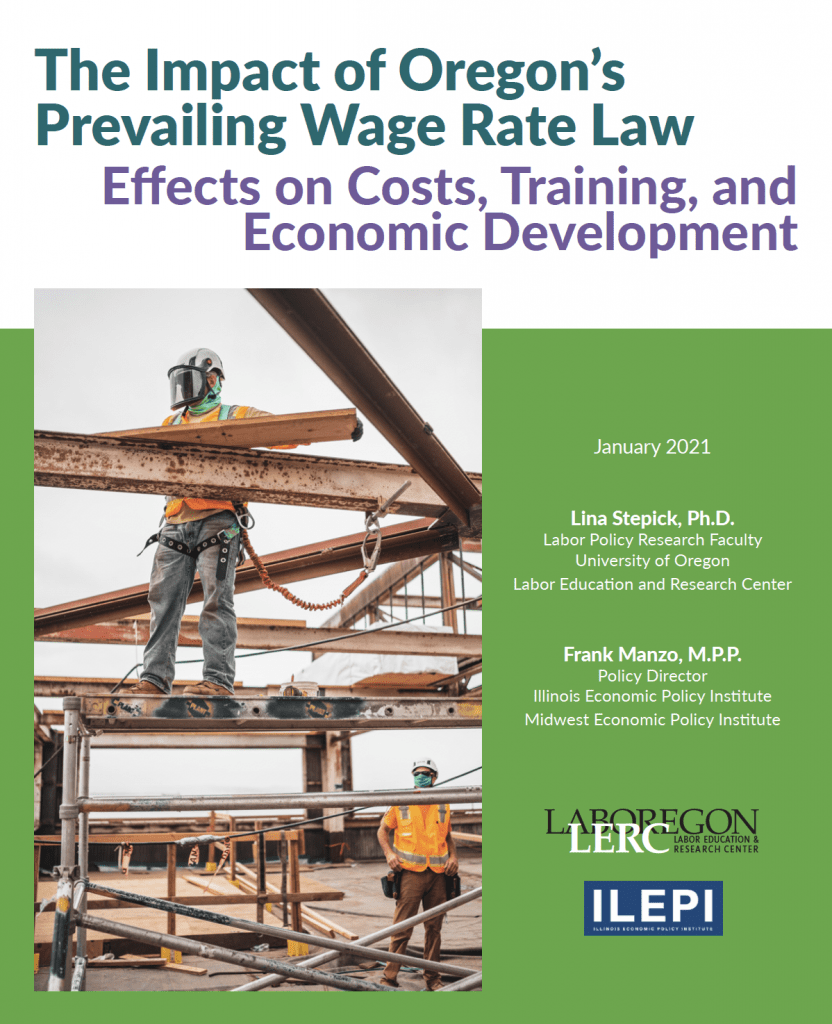
The Impact of Oregon’s Prevailing Wage Rate Law: Effects on Costs, Training, and Economic Development
The LERC and Illinois Economic Policy Institute study on the impacts of Oregon’s Prevailing Wage Rate law finds that the law does not increase project costs, does boost bid competition and the share of projects that local contractors are awarded, and increases wages and health insurance coverage.
Oregon’s Prevailing Wage Rate Law creates 5,400 jobs, improves the state economy by $752 million, and generates $35 million in state and local tax revenues every year. See the full report hereReport brief
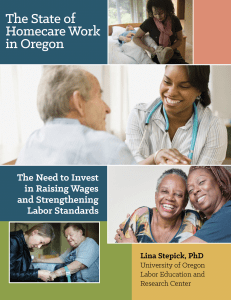 The State of Homecare Work in Oregon: The Need to Invest in Raising Wages and Strengthening Labor Standards, by Lina Stepick shows that Homecare work has one of the highest projected growth of any occupation. The homecare industry is growing rapidly while nonunion private agency homecare workers’ wages stagnate. This study details how raising wages and standards in this industry is necessary to recruit and retain the skilled and dedicated workforce Oregon needs.
The State of Homecare Work in Oregon: The Need to Invest in Raising Wages and Strengthening Labor Standards, by Lina Stepick shows that Homecare work has one of the highest projected growth of any occupation. The homecare industry is growing rapidly while nonunion private agency homecare workers’ wages stagnate. This study details how raising wages and standards in this industry is necessary to recruit and retain the skilled and dedicated workforce Oregon needs.
A second, follow-up LERC study with homecare workers in Oregon examines how COVID-19 has made already hazardous and complex work even more risky and challenging to navigate, as homecare workers often must figure out on their own how to adapt care routines and take on additional health and safety precautions at work. Because homecare work is primarily conducted by women and is one of the most racially and ethnically diverse professions nationally and in the state of Oregon, these new challenges disproportionately affect women and women of color specifically.
with homecare workers in Oregon examines how COVID-19 has made already hazardous and complex work even more risky and challenging to navigate, as homecare workers often must figure out on their own how to adapt care routines and take on additional health and safety precautions at work. Because homecare work is primarily conducted by women and is one of the most racially and ethnically diverse professions nationally and in the state of Oregon, these new challenges disproportionately affect women and women of color specifically.
 A LERC and UO Sociology study on the impacts of the first statewide Fair Workweek law reveals “Persistent Unpredictability” in Oregon retail, food services, and hospitality workers’ schedules, as employers find ways to continue changing workers’ schedules at the last minute and avoid predictability pay obligations.While the law is a first step in addressing unstable scheduling practices and increases advance notice and ensures workers have the right to rest between shifts, certain provisions, such as the voluntary standby list, leave room for improvement. This study also reveals the need for adequate funding for BOLI as more robust resources for education and enforcement are necessary.
A LERC and UO Sociology study on the impacts of the first statewide Fair Workweek law reveals “Persistent Unpredictability” in Oregon retail, food services, and hospitality workers’ schedules, as employers find ways to continue changing workers’ schedules at the last minute and avoid predictability pay obligations.While the law is a first step in addressing unstable scheduling practices and increases advance notice and ensures workers have the right to rest between shifts, certain provisions, such as the voluntary standby list, leave room for improvement. This study also reveals the need for adequate funding for BOLI as more robust resources for education and enforcement are necessary.
For more see full report here: Persistent Unpredictability: Assessing the Impacts of Oregon’s Employee Work Schedules Law
In a follow up study to the “Predictable Unpredictability: Assessing the Impacts of Oregon’s Employee Work Schedules Law” LERC and UO Sociology researchers conducted 52 in-depth interviews with Oregon retail, food services, and hospitality workers about what it means to be an essential worker in the service sector under COVID-19. This study, #Forever Essential, reveals that workers have no choice but to be essential and continue working despite facing new physical and emotional hazards in their workplaces. See the brief here.
UNLAWFUL: U.S. employers are charged with violating federal law in 41.5% of all union election campaigns LERC Professor Gordon Lafer and Graduate Student Lola Loustaunau along with other collaborators, have co-written a new study published by the Economic Policy Institute.
The data show that U.S. employers are willing to use a wide range of legal and illegal tactics to frustrate the rights of workers to form unions and collectively bargain. The combination of illegal conduct and legal coercion has ensured that union elections are characterized by employer intimidation and in no way reflect the democratic process guaranteed by the National Labor Relations Act.
September 2017, Gordon Lafer co-authored an academic paper together with former US Department of Labor Chief Economist Heidi Shierholz. The paper, titled What union coverage numbers might look like without NLRA preemption, is available for download here. The paper addresses recent suggestions that effective union representation might be improved by waiving federal preemption under the National Labor Relations Act, and allowing states to set private sector labor law, as they do for the public sector. The paper was presented at a conference of the Harvard University Labor & Worklife Program, and is slated for publication in a special issue of the online Harvard Law Journal.

Mary C. King
 The Care Revolution: The Transformation of Home Health Care in Oregon
The Care Revolution: The Transformation of Home Health Care in Oregon
A short film (28 minutes) collaboration by Sonia De La Cruz, Division of Culture, Arts and Communication, University of Washington-Tacoma, and Bob Bussel, Labor Education and Research Center “The Care Revolution” tells the inspiring story of the first wave of organizing by Oregon’s home care workers. Grounded in extensive interviews with workers, the film explains how union representation has transformed the lives of caregivers and improved the quality of care for the people they serve. See the short film on YouTube.
The LERC Monograph Series on public sector labor relations includes definitive research and commentary on the workings of Oregon’s Public Employee Collective Bargaining Act (PECBA) by labor and management advocates as well as neutrals.
OCCUPATIONAL SAFETY and HEALTH
Safety Voice for Ergonomics (SAVE): Evaluation of a masonry apprenticeship training program, Jennifer A. Hess,Laurel Kincl, Douglas L. Weeks, Amelia Vaughan, and Dan Anton
Masons have high rates of strains and sprains, more than other construction trades. Viable solutions to these musculoskeletal injury hazards have been identified by industry stakeholders, yet in the past masons have received minimal ergonomics training to prevent such injuries. Apprentices and other younger workers have even higher rates of injury so it essential to provide them with ergonomics training and strategies to identify and speak up about safety issues on job sites. To fill this gap, our team developed the Safety Voice for Ergonomics (SAVE) training, a 7-unit, interactive video training with discussions, quizzes and activities that specifically address masonry ergonomic hazards and solutions. This training is available to download for free from the Center for Construction Research and Education.


